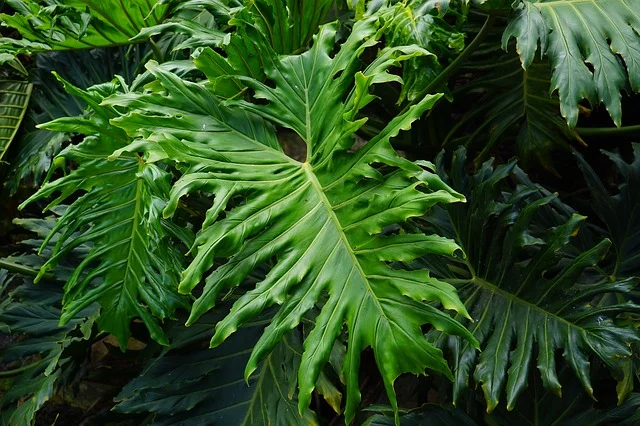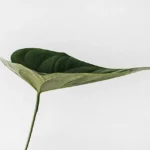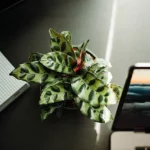Table of Contents
How To Care For Your Philodendron Selloum
Caring for your philodendron selloum can feel a little intimidating at first. A tropical houseplant can seem as though it’s care will be complicated.
Thankfully, the philodendron selloum is a pretty robust and easy to care for plant: if you know how to look after it properly!
This easy to follow guide will tell you everything you need to know to get the most out of this beautiful plant.
PRE-WARNING: This plant is considered poisonous so should be kept out of reach of children and pets!
What does your philodendron selloum require?
This section will take you through the absolute essentials for growing this plant. It’ll cover light, temperature, soil, and humidity – everything you need to know to give this plant its best start!
Light
When it comes to sunlight, the philodendron selloum does best in an area with indirect, or moderate exposure to the sun. In order to keep the plants gorgeous natural green color, you’ll need to follow this advice carefully.
Too much and its green will fade; too little and it’ll darken.
Temperature
As a tropical plant originating in South America, you probably won’t be surprised to hear that this plant isn’t particularly fond of the cold.
Make sure it’s kept in an area above 55 degrees Fahrenheit, and keep it shielded from any open windows or other places that tend to have a bit of a draft.
Be mindful too of any air conditioning vents or heaters in your home – it’s best to keep this plant away from those so that it’s temperature doesn’t fluctuate too much.
Soil
A soil that isn’t salty, can retain moisture, and is rich and slightly alkaline is best for this plant. You’ll know if the soil your using is too salty because the plants tips will look burnt. If this is the case, and your plant hasn’t been in direct sunlight, change your soil.
Humidity
Again, the South American climate is usually quite humid, so the philodendron selloum will require you to replicate this in your home. Throughout most of the year you may find your plant copes quite well, but always exercise caution in winter.
You may find the air to be drier and this will effect your plant. Be sure to place it by a humidifier or on a wet pebble tray to keep the air moist around it.
How to water your philodendron selloum
There are a few steps that you should follow before adding any more water to this plant, because overwatering can be a common mistake that people make:
- First, make sure the top layer of soil is dry.
- Then, pour around 1 cup of water into the pot, making sure the plants stem gets moist.
- Wait until the water is absorbed. Resist the urge to add any more until you test the soil again. It should be moist, not soggy!
- Repeat the above steps only when the top layer of the soil is dry again.
As an extra note, you should be careful when watering in winter. Generally speaking this plant doesn’t need a lot of water in the winter months, so try to keep the soil barely moist.
How to fertilize your philodendron selloum
One of the best things about this plant is that it will tell you when it needs fertilizer. If the leaves are starting to pale, it’s usually because you need to add more fertilizer.
But be warned, the philodendron selloum doesn’t need a lot of fertilizer to thrive. In fact, once a month is more than enough, and you should be sure to dilute the fertilizer that you are using to less than the recommended dose for this plant.
Too much fertilizer can over salt the soil and lead to leaf burn. Look for a balanced water-soluble fertilizer and try not to fertilize at all in the winter months.
Extra Tips for Philodendron Selloum Care
This final section will cover things that will make caring for your plant that much easier. There will be some tips and tricks on how to look out for problems regarding pests and diseases, and the proper methods for pruning and propagation.
Pests and Diseases
When caring for any plant it’s important to look out for signs of pests and diseases, but especially with the philodendron selloum. Scale, Spider Mites, Mealy Bugs, and Aphids are all common pest problems for this plant.
They are easily dealt with though, by spraying your plant with warm soapy water. They can also be prevented by regularly wiping the leaves after misting and keeping your plant dust free.
In terms of diseases the most common problem you’ll face with this plant is bacterial blight. This is easily identified by large dark green blotches on the leaves that spread.
If your plant has this then the leaves will rot and die. To avoid this, do not water overhead and keep the plants leaves dry.
If you are misting the plant to avoid pests for example, be sure to wipe down the leaves to dry them off. Wet leaves are the most common cause of bacterial blight.
Pruning
This plant is robust, and can withstand some pretty hefty pruning. Entire leaves can be removed if desired, by simply cutting at the base of the leaf stem with a pair of sharp pruners or scissors.
Some people may like seeing the stem of the plant, so removing the lower leaves won’t cause any problems here. Any damaged or dead leaves should always be removed quickly to avoid further problems.
Always wear gloves whilst pruning this plant as it is poisonous, and be sure to properly clean your scissors or pruners after use.
Propagation
It is possible to propagate this plant to create another for yourself or somebody you know. If the leaf you have removed during pruning is cut at the base of the leaf stem, then you can use this cutting to grow another plant.
Simply add it to water and watch the roots grow (make sure you top up and change the water regularly), or just replant the cutting in another pot. Then simply care for it as you would your other philodendron selloum.
Hopefully this guide has been useful and highlighted how easy it is to care for this beautiful plant!


